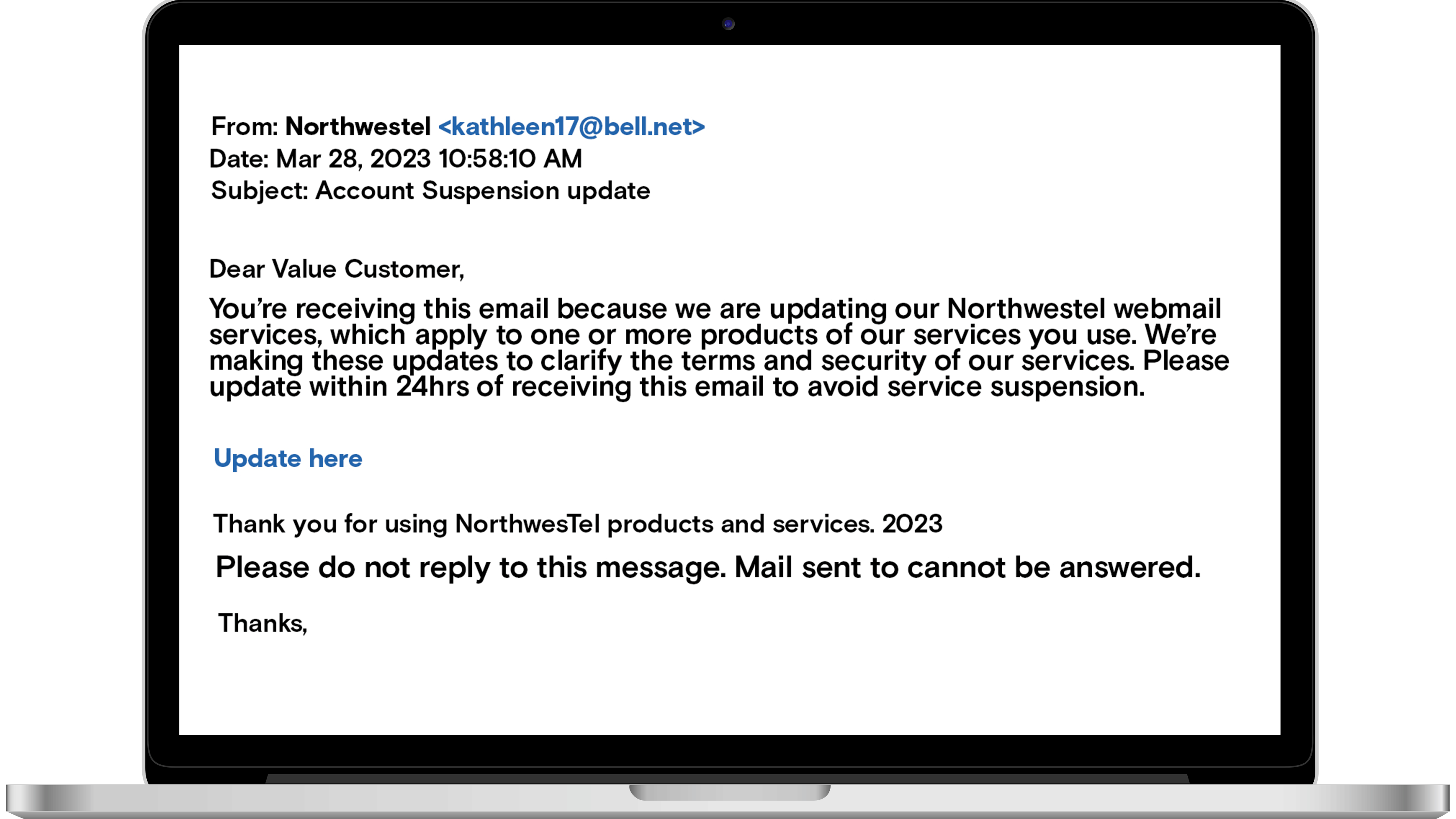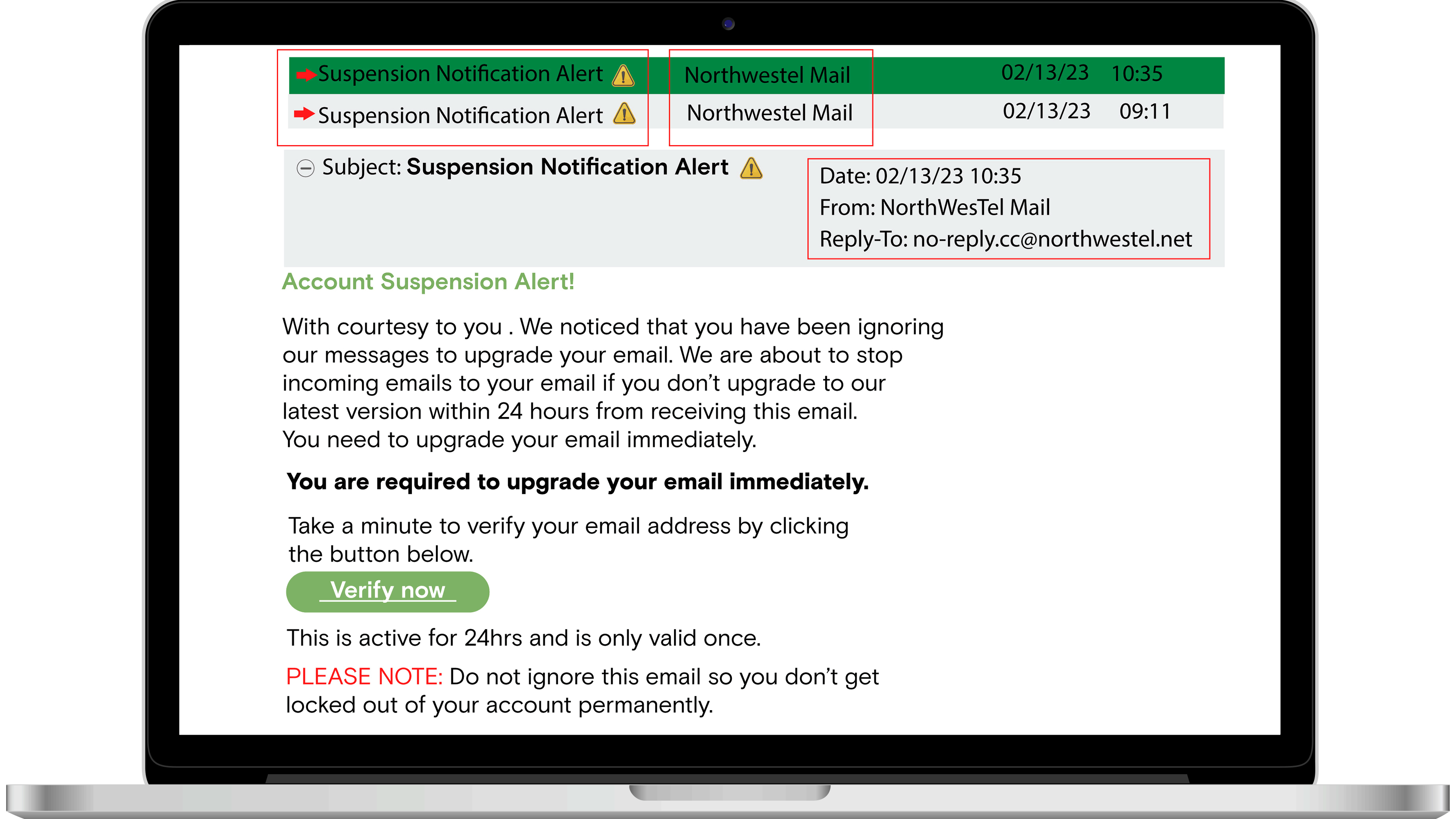
4 ways to spot phishing hooks & email scams
It doesn’t matter whether you’re a big bass or a minnow, phishing scams, also known as email scams, are targeted at all ages and can affect anyone.
Phishing scams are fraudulent emails that are designed to look just like emails coming from a reputable company to try to trick users into handing over personal information. They are becoming more prevalent and harder to spot as scammers become savvier.
At Northwestel, we are blocking fraudulent email domains when we become aware of them to protect you, our customer. However, even the most advanced e-mail systems are not immune to suspicious e-mails.
Here are 4 ways you can spot a scammer in your inbox
1. The sender’s name does not match the email

Above you can see that this email appears to be from Northwestel but the email address reads: kathleen17@bell.net
This is a pretty good indicator that the email is not from who it says it is and could contain false information.
2. They ask for a payment, offer a reward, or need information verified

In this example they are asking you to click a suspicious button that says ‘Verify Now’ or else your account will be locked. Northwestel will not lock you out of your account at any time, nor ask you to upgrade your email.
3. There’s a sense of urgency or a sense that something ‘bad’ is going to happen
In both above examples we see pressure for the user to act quickly. The first example says the user has 24 hours to avoid an account suspension. In the second example, it says if they don’t take action within 24 hours that your e-mail will stop receiving incoming messages.
This is a tactic scammers use to intimidate users into taking action without thinking it through. If an email is making you feel anxious about something bad happening, it is wise to wait and re-assess later.
4. You see obvious spelling mistakes or outdated information
In the first example we read, ‘Mail sent to cannot be answered,’ which is grammatically incorrect.
Oftentimes, scam emails will have misspelled words or grammatical errors that are easy to spot. This is a red flag that the email is not from a legitimate company.
How to stay safe
Take 5 minutes before taking any action to think it through.
Be suspicious of emails that are asking for money or information from you.
When in doubt, delete or forward suspicious emails to Phishing@northwestel.net
For more information visit our support page here.
